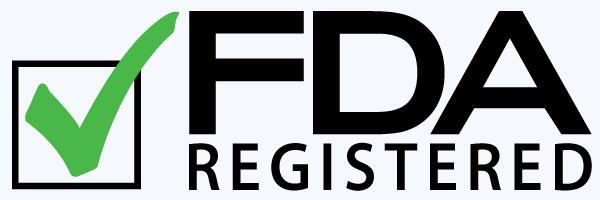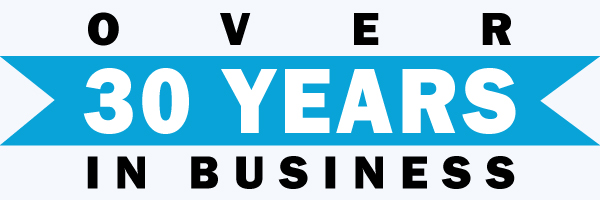Objective Findings: A Powerful Clinical Tool
As we start a new year, we often reflect on the progress we've made in the one coming to an end. Some of us may measure progress as trips to the gym, others in dollars earned, while others may keep track in more abstract measurements.
When it comes to the field of physical therapy, results are often measured by a patient's perceived changes. Am I stronger? Has the pain subsided? Can I perform functions I could not previously perform? But a patient's feelings are subjective, and can often be ambiguous, or influenced by emotions or perceptions. Objective findings become a powerful tool for a clinician in determining a patient's treatment plan and progress, while also serving as an easily understood and quantifiable value for the patient and referring parties.
In order to better understand the role that objective findings can play in a physical therapy practice, JTECH Medical sought out an expert. Jonathan Reynolds, PhD, PT, has been practicing physical therapy for over 25 years. During this time he has worked for hospitals and in private practice, worked on the design and development of two different software programs—JobSite 2 and the FCE module of the Northstar Occupational Medicine system—in conjunction with JTECH, designed his own lifting evaluation, taught continuing education seminars on Functional Capacity Evaluations and Job Site Analysis, created a tool—the TOLA System®—which allows patients to augment their therapy sessions at home, and developed research protocols for testing the functional capacity of dancers and musicians. Reynolds opened his clinic, Reynolds Rehab, with locations in Minneapolis and Eagan, MN. More recently, Reynolds Rehab partnered with Orthology. These clinics specialize in treating professional performing artists (dancers and musicians) alongside general orthopedic outpatient rehabilitation and industrial rehabilitation. With a background in research—having earned his PhD in Rehabilitation Science—Reynolds approaches his practice with objective data in mind, an approach that he thinks could benefit all practices.
"In our practice, we strive to provide evidence-based care," said Reynolds. "And while an evidence-based approach is often associated with research, it is also a powerful method with which to approach rehabilitation. If something can be proven effective, then it is evidence. Objective findings allow us to prove that a particular treatment plan has efficacy, and this evidence then qualifies what we do, while also helping us provide better and more productive care."
Including objective findings in a practice can help to build trust in relationships; and relationships are what Reynolds points to as a major contributor to his practices' ability to compete with larger clinics, which tend to refer within. Along with great treatment and care, Reynolds and his therapists ensure that they are constantly providing objective feedback to the referring parties, assuring them that the treatment is warranted and achieving results.
"Our success as a small practice is multi-faceted. Our therapists are well-trained and we have great communication. We are clear about the goals we want to meet and what outcomes we expect," said Reynolds. "Objective findings, like those we get with JTECH Medical's products, provide a platform for this critical communication. It allows us to build relationships with our patients, referring physicians, case managers, insurance companies, etc. And being able to track these outcomes objectively founds these relationships upon trust."
Orthology also uses manual therapy techniques as an integral part of rehabilitation. In the United States, most physical therapy is heavily exercise focused, but many people come to rehabilitation lacking the ability to immediately begin to exercise comfortably and effectively. To this end, Orthology helps patients arrive at a point in which they are comfortable with the exercise before they begin an exercise regimen. To help determine this point, the clinic incorporates objective findings alongside patient feedback.
"We can collect objective measurements when the patient first comes to our clinic, and then track their progress as we use manual therapy techniques," Reynolds said. "With the algometer and range of motion tests in particular, we are able to track the improvement and better decide when a patient will be able to be more comfortable and compliant with prescribed exercises. We then see strength gains with exercises performed at improved comfort levels."
At Orthology, each patient receives an objective evaluation before and after physical therapy, which allows the therapist to monitor the patient’s progress throughout treatment, and track outcomes. Depending on what outcomes they are tracking for a given patient, they will also perform a mini-discharge at the end of the treatment program, providing objective data that clearly points to a plateau in improvement, signaling the end of the physical therapy program.
"The objective findings are a critical component of our rehabilitation programs, but they can be a double edged sword," said Reynolds. "The person doing the evaluation needs to know what they are doing and how to interpret the data they receive. Education and ongoing practice is crucial to an evaluator's ability to accurately collect data, compare it from visit to visit, and interpret these results."
Reynolds stresses the need to use these systems that provide objective findings judiciously. At Reynolds' clinics, they make sure to use only the tools that are appropriate to a patient's injury and the targeted outcomes. In other words, even if they are able to completely test a patient's functional ability, their particular situation may not call for that, and it is important to use objective tools to validate the treatment plan that is required.
Incorporating objective findings into a practice can take on a variety of forms. Reynolds used JTECH's products when working on his doctoral dissertation, which focused on the shoulder mechanics and injuries in professional violin players. Since then, he has used the tools in other research projects aimed at grip strength as well as further research into shoulder mechanics. He also incorporates objective findings in other more traditional ways, such as for Functional Capacity Evaluations (FCEs), as well as work hardening, ergonomic, and job site evaluations.
"From an FCE standpoint, an evaluator's most powerful tools are his or her eyes. A system that you can rely upon to accurately collect objective data about the performance allows you to keep your focus entirely on the patient, observing their behavior and effort," said Reynolds. "You can also take the equipment to a job site and tell the employers the relative risk of workplace activities. Using the JobSite 2 software tools, such as the NIOSH Lifting Equation tool, or the Cumulative Trauma Disorder risk assessment tool, I can pinpoint the issue. Is it repetition? Too much weight? Is the worker reaching too high or too low? With the objective findings, you can point out which changes need to be made right there on the spot."
These skills require proper training and constant practice. Reynolds first received his FCE and ergonomic training through seminars, and he continues to use these skills every day, including teaching them to other practitioners. His therapists, too, receive training, are constantly practicing, and receive periodic in-house training sessions to ensure that they are able to use these tools to obtain meaningful data.
"I could teach my sixteen-year-old son to use the equipment to collect all of the data, but he wouldn’t know what he was doing," said Reynolds. "He could make the evaluation look and feel legitimate, but the data would be meaningless. It is imperative that the evaluator be skilled and properly trained in obtaining meaningful objective data, and that this education remains an ongoing process."
Learn More About:
Algometry Grip Strength Range of Motion Muscle Strength JobSite 2 Software
Share this article:


